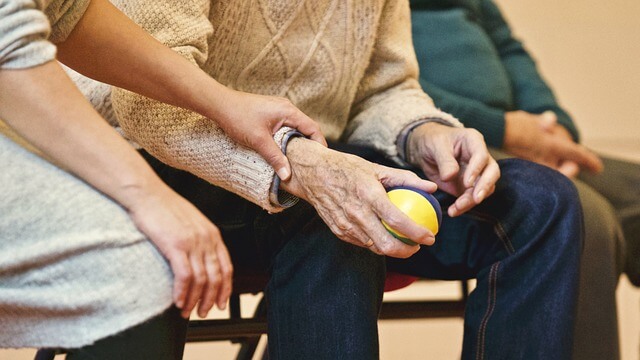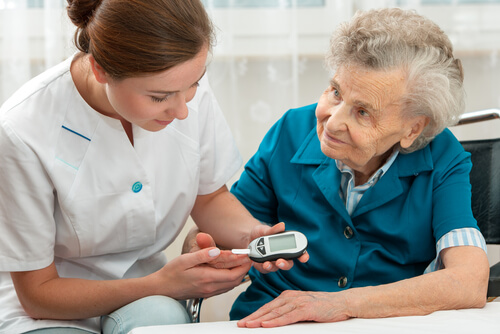
10 Facts About Cancer Every Senior Should Know
Cancer is a widespread disease that can affect anyone at any age. People of all ages, ethnicities, income levels and location can be diagnosed with cancer. It is the number two leading cause of death in the world. Cancer is not just one type of disease, but a group of diseases that is characterized by the uncontrolled growth and spreading of abnormal cells. There are over 100 types of cancer and it can develop in any part of the body.
Here are 10 facts about cancer that every senior should know.
Causes
Tobacco use is the single largest preventable cause of cancer in the world and is responsible for 22 percent of deaths from the disease. This is an easily avoidable cause of the disease, especially for seniors. Anyone who needs help quitting smoking should consult with their doctor to find out more about how to quit smoking in order to improve their health and quality of life. Alcohol is another major cause, particularly in regards to cancers of the esophagus, stomach, liver, colon, and rectum. Cancer is also caused by a variety of carcinogenic or environmental factors, including radiation, chemicals, and other unknown causes. Only a small percentage of cancers (between 5 percent and 10 percent) are linked to genetics. Many skin cancers are linked to prolonged sun exposure or the use of indoor tanning beds.
Symptoms
Cancer is in many cases difficult to diagnose. Patients often show no signs or symptoms in the early stages. General symptoms include fatigue, loss of appetite, nausea, sudden weight loss or weight gain, among others, but most of these symptoms are also associated with other common, less serious ailments, and so are not necessarily indicative of the presence of cancer. Of all the symptoms, the most telling is pain. There are many types of cancer pain that patients can experience. Acute pain is a severe pain that lasts a short time and usually is a sign that the body has been damaged in some way. Chronic pain lasts for long periods — usually over three months. It can be very disruptive to your life and usually needs to be managed with medicines. Breakthrough pain is a type of pain that occurs even when people are taking pain medicine to manage it. It can be much more intense or severe than chronic pain.
Death Rates
According to the World Health Organization (WHO), 2 million deaths globally were attributed to the disease in 2012. In 2015, 8.8 million people died from it — nearly one in six deaths worldwide. About 16 percent of people worldwide die from it. Nearly 70 percent of all deaths from cancer occur in low- and middle-income countries.
Common Types of Cancer
In 2015, worldwide, the most common types of cancer that killed men were lung, liver, stomach, colorectal, and prostate cancers. For women, the most common of types of fatal cancer were breast, lung, colorectal, cervical, and stomach cancers.
Prevention
Between 30 percent to 50 percent of cancers are preventable. Tobacco use is by far the largest preventable cause in the world. There are also many vaccinations that can aid in preventing the disease. In 2012, cancer-causing infections were responsible for up to 25 percent of newly diagnosed cases in low- and middle-income countries. HPV can cause cervical cancer and hepatitis B virus can cause liver cancer. Getting vaccinated against these two viruses can prevent 1.1 million cases each year. Other measures to reduce the risk of developing certain types of cancer are avoiding smoking, drinking alcohol to excess, avoiding exposure to certain chemicals, as well as maintaining a healthy weight and consuming a balanced, nutrient-rich diet.
Treatment
Treatments vary widely depending on the type of cancer and how far it has progressed. In many cases, surgery can help to remove cancerous cells and tumors. In other cases, medicines are used to regulate blood cell activity. Radiation therapy uses high-energy particles or waves — like x-rays, gamma rays, electron beams or protons — to destroy or damage abnormal cells. It helps to make small breaks in the DNA inside cells to keep the cancerous cells from growing and dividing. Chemotherapy is a way of exposing the whole body to cancer-fighting drugs at once. Access to treatment in low-income countries is low, whereas 90 percent of high-income countries have consistent access.
Economic Impact
The economic impact of cancer is significant. The total annual cost of the disease in 2010, according to the World Health Organization, was estimated at approximately $1.16 trillion.
Age Is a Risk Factor
Anyone can develop cancer, but the risk of developing it increases with age. Most cases of it occur in middle-aged adults or older, and close to 77 percent of all diagnoses occur in people 55 years or older. Seniors can drastically reduce the chances of developing cancer by seeing their healthcare practitioners regularly and making sure to report any changes in health to their doctors.
Skin Cancer
Although it is not one of the top five fatal cancers for men or women, skin cancer is one of the most common treatable types for both genders. Over 2 million cases are diagnosed every year and many could be prevented by taking necessary precautions, such as avoiding prolonged exposure to the sun, wearing sunscreen, and avoiding indoor tanning. Caught early, skin cancer is fully treatable. Seniors who have spent significant time under the sun should routinely check for and monitor skin changes, and report to a doctor immediately if they spot any unusual changes.
Advanced Cancer
As the disease progresses, the only way to treat it is with palliative care. This involves a treatment regime that healthcare professionals agree on in order to minimize pain and improve quality of life for the patient. This can often mean home care or hospice care in order to have round-the-clock treatment.
Cancer is a very serious disease and research on the topic is still being developed. There are no known cures for cancer but with preventative measures and treatment, cancer cells can be controlled.






